Corrosion Monitoring
Corrosion Mapping in a Cost-Sensitive Climate.
Published on 5th July 2023

Image credit @nortonrosefulbright
Corrosion, the progressive deterioration of materials by chemical or electrochemical reactions with their environment, is recognized as one of the most significant problems resulting in hundreds of billions of dollars in losses every year. Corrosion or erosion impairs the strength, appearance, and impermeability of gases and liquids in materials and structures. Several industries have recognized that not having effective corrosion management is too expensive and that substantial cost savings are possible through proper non-destructive testing (NDT) of critical assets.
The Challenge
Find a cost-effective solution that can offer high productivity for a broad range of corrosion mapping requirements.
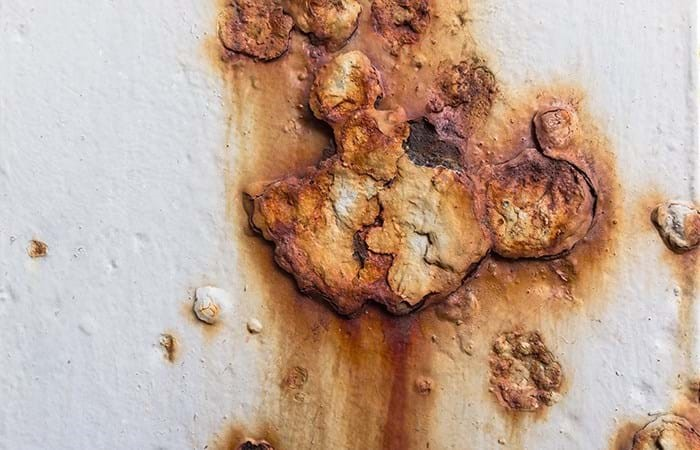
Technicians performing phased array corrosion mapping on vessels, dome ends, and associated pipework have to contend with a number of challenges. The technique used has to be able to measure remaining wall thickness variations for a wide range of thicknesses with maximum accuracy and for components that can exhibit complex geometries and restricted access. The technique needs to provide 100% area coverage while potentially detecting localized pitting corrosion (resolution in the range of millimeters) with high probability and good near-surface resolution.
While conventional ultrasonic testing (UT) equipment such as thickness gauges can be used, they only provide punctual measurements making it difficult and time-consuming to obtain precise cartography of an asset and are quite likely to miss localized pitting corrosion. Results can differ from one inspection to another and from one operator to another. Automated corrosion mapping with conventional UT probes can improve on all aspects but requires scanning the probe across the entire surface of the asset with a small mechanical step to ensure the detection of localized pitting. While not as time-consuming as spot-checking, it still might not be compatible with the time availability of the asset.
Another important challenge regarding productivity and precise corrosion inspection is data analysis. It can sometimes become the bottleneck for giving a decision about the integrity of a component as operators need to report all the required information such as size, remaining thickness, and all the corroded areas which can be time-consuming for large corrosion maps and heavily corroded areas.
The Solution
Complete phased array ultrasonic solution offered in turnkey packages providing complete coverage of assets.
Phased array UT (PAUT) extends on the regular spot measurement of the single crystal method by using an array of N ultrasonic transducers (or elements). Through electronic scanning of these elements, a wider scan area (close to the probe total aperture) can be acquired as opposed to the standard single element. When the probe is swept, a strip of measurements is created. With minimal overlap, far less raster sweeps of the probe is required to cover the same area to that of a single crystal probe providing scanning speeds of up to 10 times faster with 100 % coverage. PAUT also provides the ability to generate focused beams. This improves the lateral resolution thus the detection of isolated pitting. Beam steering and focusing can also provide better differentiation between pitting and less dangerous indications such as inclusions or delamination.
Eddyfi Technologies offers a complete solution with advanced phased array instruments, a range of automated and manual scanners, a full range of probes and wedges, and advanced analysis software.
Instruments
Gekko®
The Gekko comes with conventional UT, time-of-flight-diffraction (TOFD), and all beam-forming phased array UT techniques for single-beam and multi-group inspection, plus its 3-encoded axis capabilities make the Gekko ready for any challenging inspection.
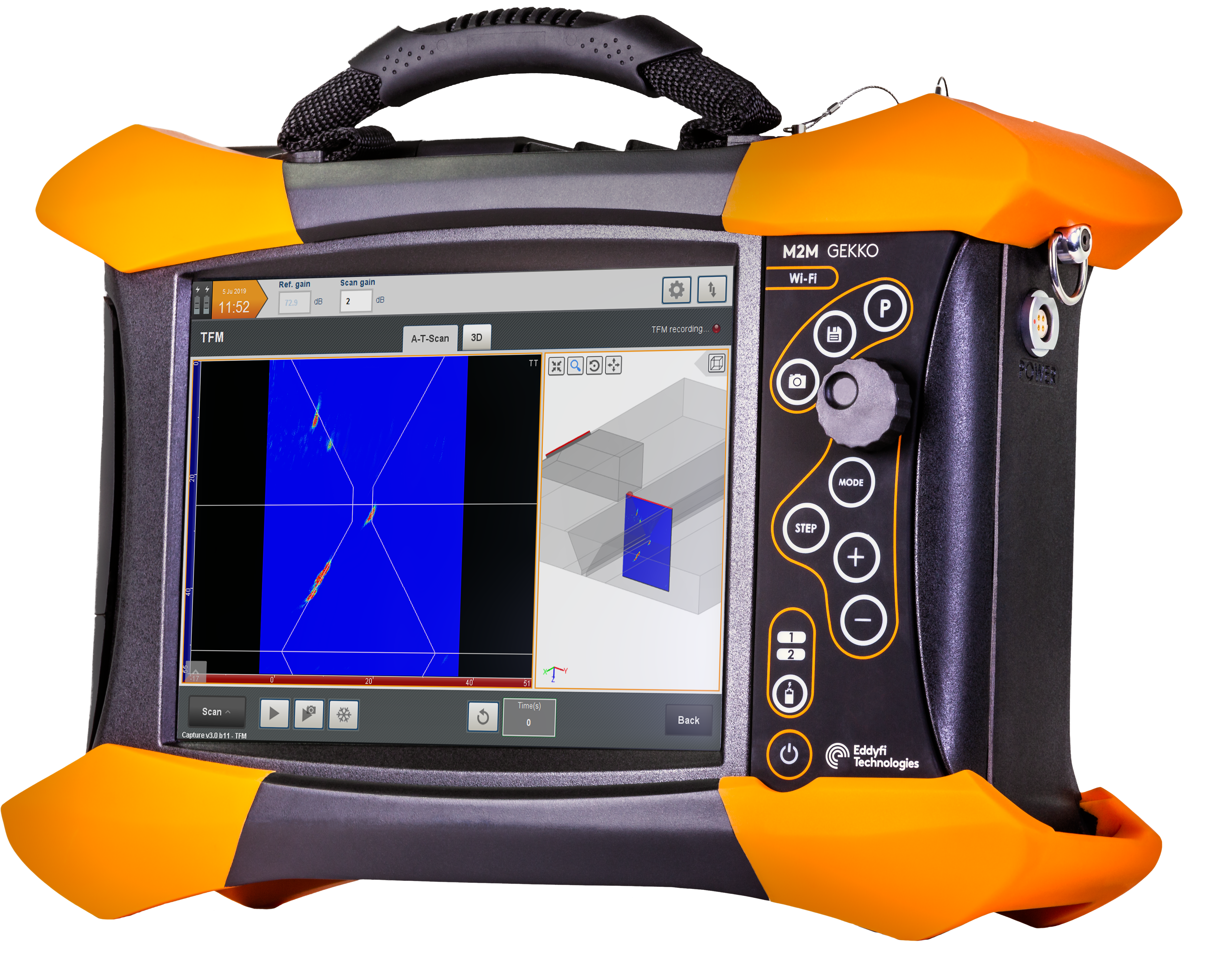
Mantis™
Designed for corrosion mapping, the Mantis is a light and economical version of Gekko using the same technologies and software interface, Capture™.
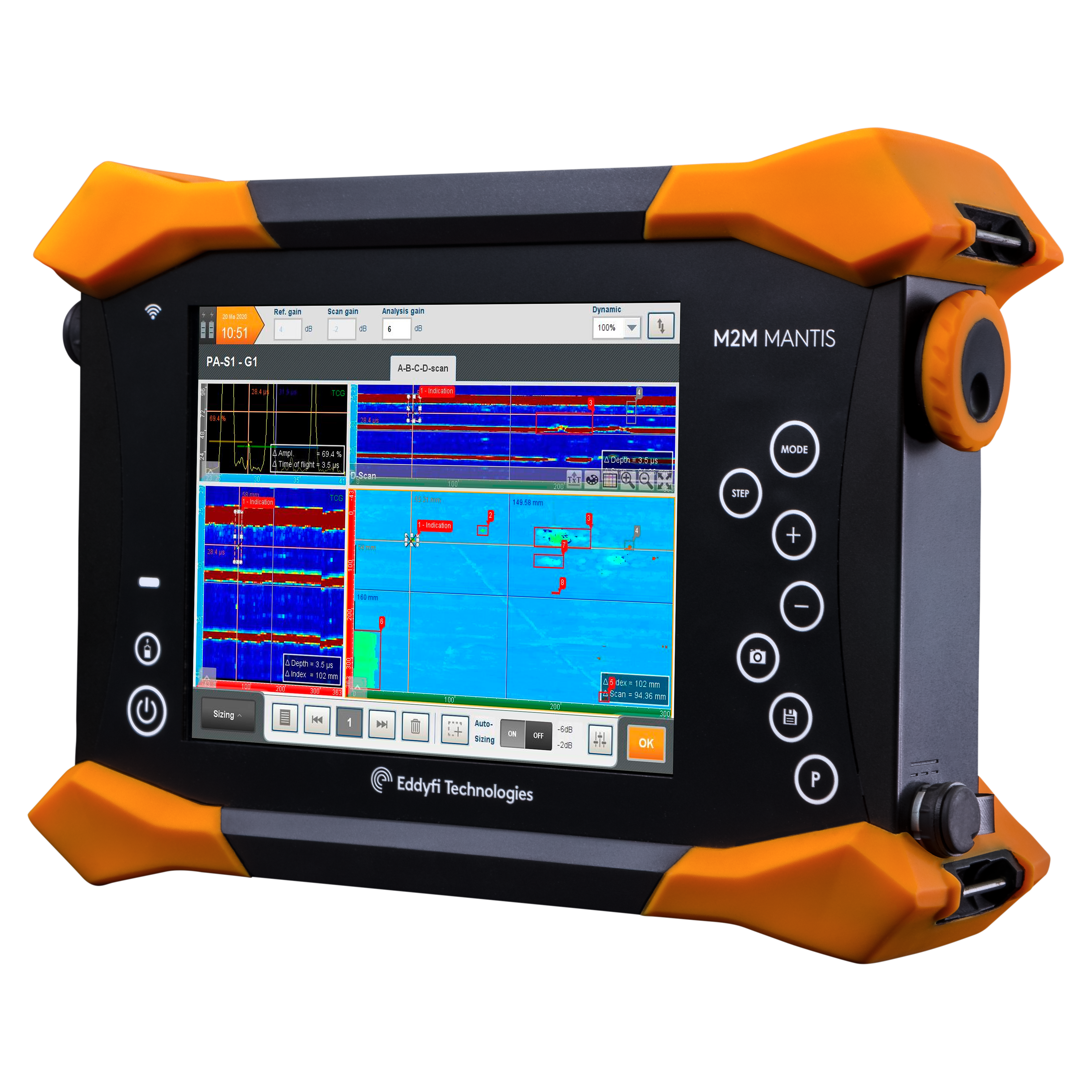
Scanners
RMS PA
The automated, robust, field-proven RMA PA robotic scanner has been successfully deployed on various assets such as storage tanks, pressure vessels, pipelines, and other critical infrastructure. It is ideal for extensive area inspections, difficult-to-reach assets, or surfaces at an elevated temperature.
- Remote access up to 50 meters (160 feet)
- Detachable R-Scan Array
- Range of four scanning heads to suit various applications
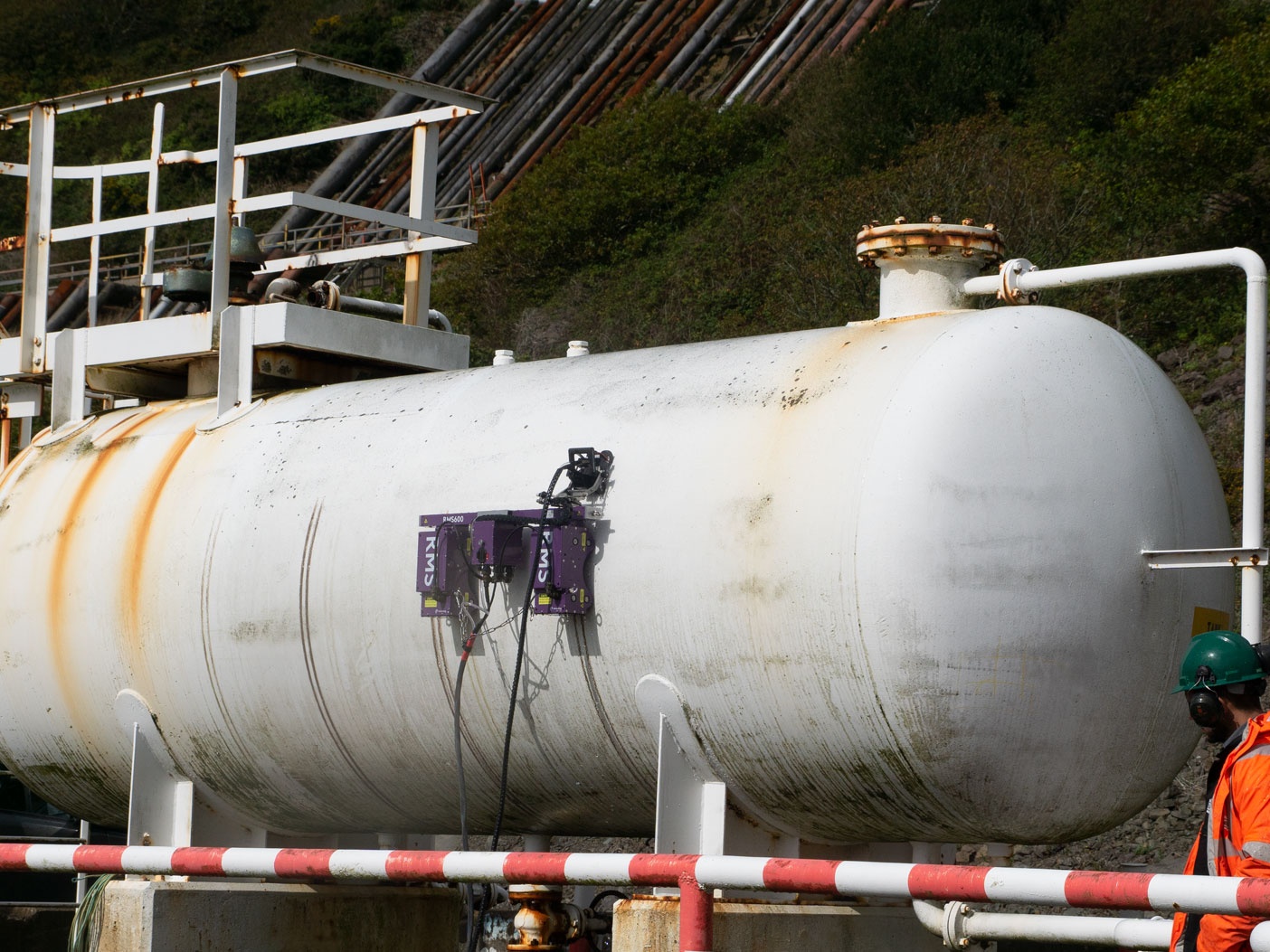
LYNCS™
A modular scanner with interchangeable bar lengths to suit inspection requirements, LYNCS is a truly versatile scanner. With onboard scan controls, it is ideal for corrosion mapping of pipes from 100 millimeters (4 inches) in diameter up to flat plate. Due to its lightweight and ease of use, the scanner is perfect for rope access inspections.
- Easily switch from corrosion mapping to weld inspection
- Low profile for tightly spaced pipe racks (110mm/4.3in)
- Magnetic wheel with brakes to stop slippage
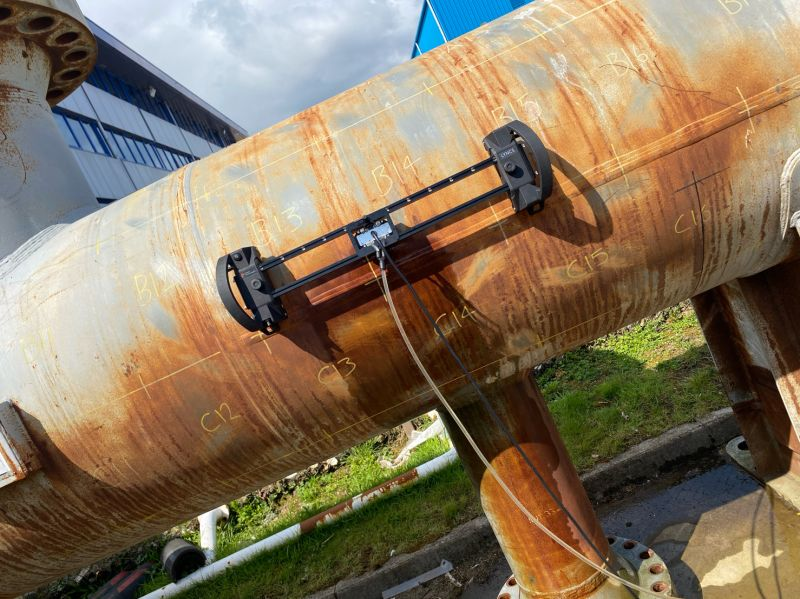
R-Scan Array
The handheld R-Scan Array scanner allows semi-automated corrosion mapping with onboard data collection capabilities. The scanner is the perfect solution for the inspection of complex geometry components including curved surfaces, flat plates, pipelines, and restricted access areas.
- Onboard control buttons to pause scan and stitch data sets
- One-handed control options and scanning handle
- The perfect complement to LYNCS for maximized coverage
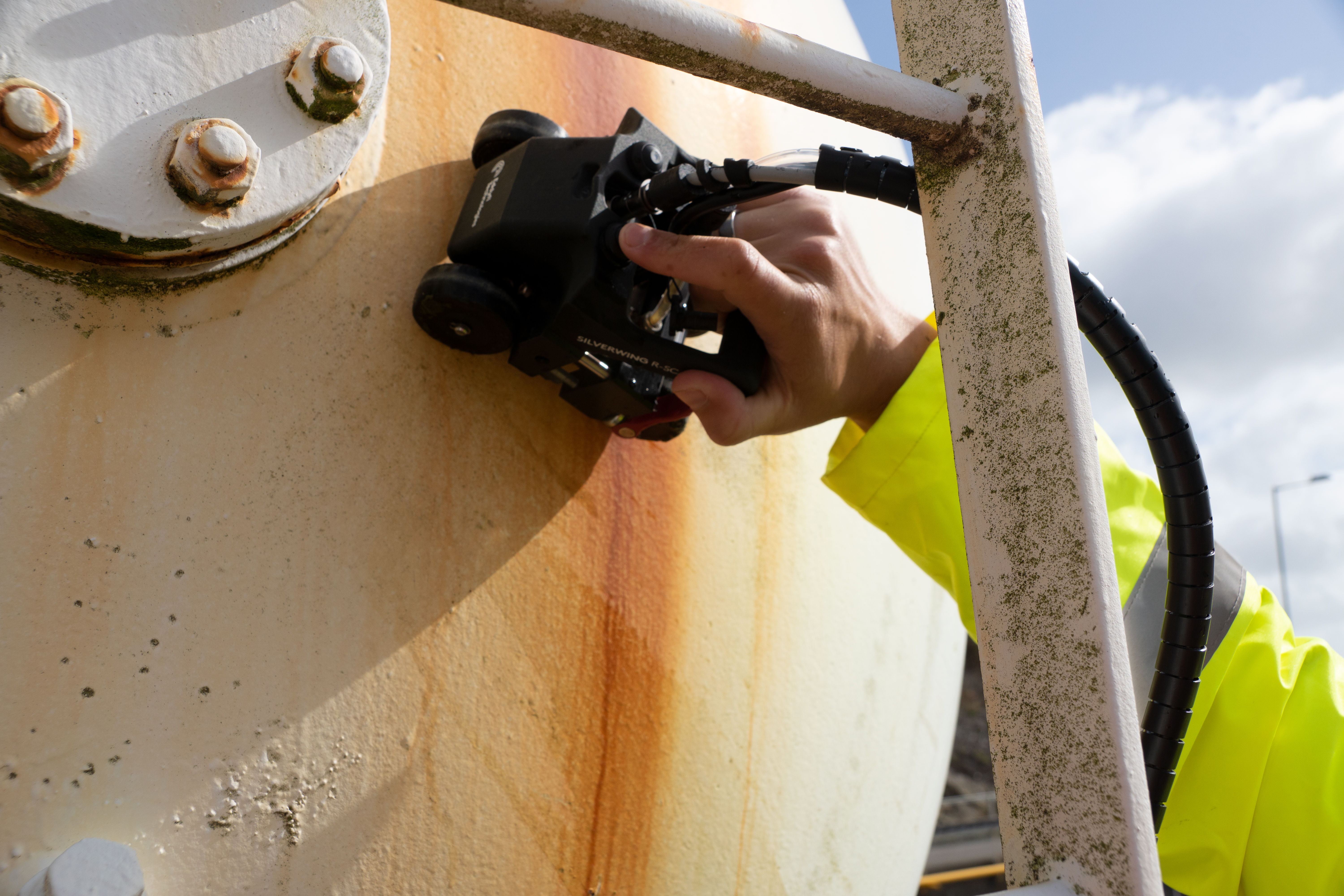
Probes and Accessories
Water box
The phased array configuration utilizes a water box that eliminates the need for a wedge, thus providing the benefits of improved signal consistency, accuracy, and limited dead zone. This concept offers enhanced surface conformity and improved coupling.
- Dual air release to remove the unwanted signal disturbance
- Utilized in all Eddyfi Technologies corrosion mapping scanners
- Quick-release probe mechanism
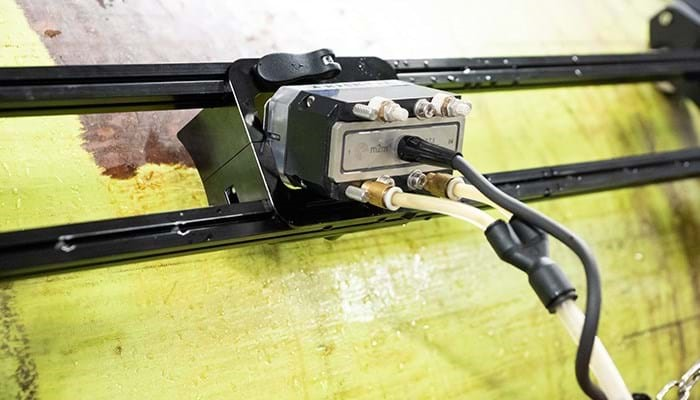
Other probes and wedges, such as dual linear arrays and high-temperature wedges are available for all kind of corrosion mapping applications.
Software
Capture™
Capture software has all the necessary features - delay laws for any type of probe, synchronized gates/time corrected gain (TCG), floating gates, cursors, views, data stitching, advanced indication banners, and reporting - to perform corrosion mapping inspection with or without paint or coatings. Capture also provides an autosizing feature that automatically detects all corroded areas corresponding to criteria defined by the operator, e.g., remaining thickness threshold, and creates a fully customizable table of indications within seconds for large corrosion maps.
In addition to standard PAUT, the Mantis and Gekko can perform the total focusing method (TFM) when corrosion mapping to further elevate the quality of the reported indications by synthetically focusing all points under the array of the probe. One benefit of TFM for corrosion mapping is the presentation of the defect shape. For example, a dome-end-like corrosion area on the far side of an inspection sample can have reflectors at an incident angle greater than 45 degrees. For the single crystal approach, the sound would not reflect to the probe location and so the roll-off of the defect would show severely reduced amplitude. With an array probe and with the TFM approach, the width of the probe would allow further elements to detect the 45-degree reflections, resulting in a holistic representation of the corrosion profile.
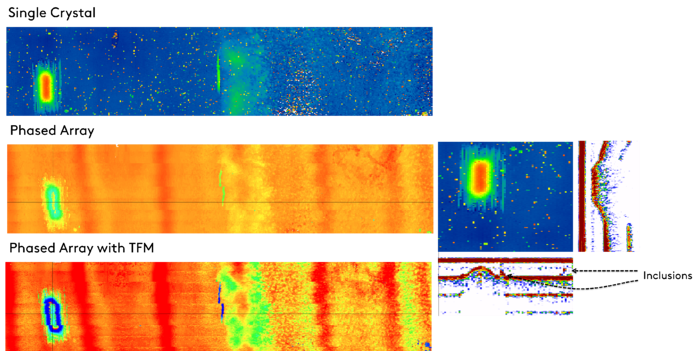
The Benefits
The software enables assisted defect analysis while shared hardware components extend higher returns on investment.
Automated corrosion mapping coupled with the PAUT technique has become an integral part of NDT inspection campaigns and is widely accepted in corrosion management programs. PAUT solutions deliver 100% corrosion mapping coverage of critical assets with productivity 10 times faster compared to conventional UT. Detection capabilities include general corrosion and erosion, microbiological-induced corrosion (MIC), and hydrogen blistering (HB) with non-intrusive inspection (NII) of various assets and components such as pipelines, vessels, and flanges.
Additionally, the TFM technology embedded in all Eddyfi Technologies phased array ultrasonic testing units can provide higher resolution, perfect for the detection and characterization of localized pitting and better definition of the contours of inner diameter surface.
With the portable Mantis and Gekko instruments and their full kit of accessories, Eddyfi Technologies proposes a compact and versatile solution for corrosion inspections with the highest productivity available on the market. Contact Us to learn more.








